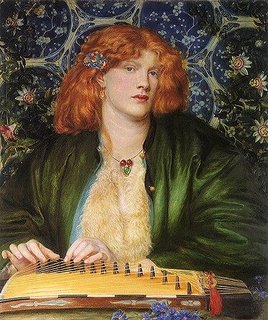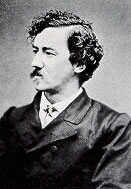
during this same period, quickly approaching the last midnight of the edo era, while france was growing ever more "refined," and "classical," some very different things were happening in england, and, not unrelated, i don't think, in japan as well.

i didn't have any idea when i began this series that it would end with such elegance, such synchronicity, and probably to say 'end' is wrong anyway.
 "When I am asked, 'Who was the greatest artist of all?', I reply that I can never quite decide whether to pick Turner or Hokusai. These two men were near contemporaries: born in 1760, Hokusai was 15 years older than Turner and died in 1849, just two years before him. Both men were hard at it as full-time pupils flora about seven and devoted themselves entirely to art for the whole of their long lives. Their output was prodigious: Hokusai finished more than 30,000 drawings plus more than 500 illustrated books. Turner's drawings and watercolours number more than 20,000, in addition to 900 oil paintings, many of them very large.
"When I am asked, 'Who was the greatest artist of all?', I reply that I can never quite decide whether to pick Turner or Hokusai. These two men were near contemporaries: born in 1760, Hokusai was 15 years older than Turner and died in 1849, just two years before him. Both men were hard at it as full-time pupils flora about seven and devoted themselves entirely to art for the whole of their long lives. Their output was prodigious: Hokusai finished more than 30,000 drawings plus more than 500 illustrated books. Turner's drawings and watercolours number more than 20,000, in addition to 900 oil paintings, many of them very large.
 "Both started as urchins in huge cities, London and Edo (Tokyo), but expanded their universe to take in the whole of nature. This process of observing and recording was never-ceasing. Turner was trying to find new ways to paint mist, vapour, water eddies and wind-flung distances in his late seventies. Hokusai wrote at the age of 74, 'I produced nothing of much value before I was 70. But I am now really beginning to learn. By the time I am 110, each individual dot or line I draw will possess its own life.'" *
"Both started as urchins in huge cities, London and Edo (Tokyo), but expanded their universe to take in the whole of nature. This process of observing and recording was never-ceasing. Turner was trying to find new ways to paint mist, vapour, water eddies and wind-flung distances in his late seventies. Hokusai wrote at the age of 74, 'I produced nothing of much value before I was 70. But I am now really beginning to learn. By the time I am 110, each individual dot or line I draw will possess its own life.'" *
 but there are wondrous other coincidences. take for example turner. now, remember john cozens, son of andrew? well, john was ill, and he began to see a doctor named dr. monro. monro was a great fan of cozens' paintings, and was an amateur painter himself. he soon had collected a great collection of the work of the younger cozens.
but there are wondrous other coincidences. take for example turner. now, remember john cozens, son of andrew? well, john was ill, and he began to see a doctor named dr. monro. monro was a great fan of cozens' paintings, and was an amateur painter himself. he soon had collected a great collection of the work of the younger cozens.
 now we have already suggested, quite convincingly, i believe, that cozens the elder had gotten his hands on some of the japanese work arriving into the netherlands; dutch painting was popular in britian at that time, and we know the dutch also had japanese scrolls. it is not a far leap to assume that john had seen them as well.
now we have already suggested, quite convincingly, i believe, that cozens the elder had gotten his hands on some of the japanese work arriving into the netherlands; dutch painting was popular in britian at that time, and we know the dutch also had japanese scrolls. it is not a far leap to assume that john had seen them as well.
 dr. munro also took art students, occasionally. when he did, a major practice he'd lead them through was to copy, over and over, the cozens paintings. one of his two leading students you may not have heard of -- his name was thomas girtin. but the other, his friend and schoolmate you have. it was jmw turner.
dr. munro also took art students, occasionally. when he did, a major practice he'd lead them through was to copy, over and over, the cozens paintings. one of his two leading students you may not have heard of -- his name was thomas girtin. but the other, his friend and schoolmate you have. it was jmw turner.
 about 6000 miles to the west, the imported artwork from holland was having a major impact. shiba kokan was a japanese painter who had gotten ahold of a dutch book on 'how to draw.' being one to tend to the rational, even scientific, he was quickly convinced that european painting was superior to that in japan and quickly sought to learn all he could. he could not read the dutch, but he could grasp the principals, such as perspective and modeling, from the book's illustrations.
about 6000 miles to the west, the imported artwork from holland was having a major impact. shiba kokan was a japanese painter who had gotten ahold of a dutch book on 'how to draw.' being one to tend to the rational, even scientific, he was quickly convinced that european painting was superior to that in japan and quickly sought to learn all he could. he could not read the dutch, but he could grasp the principals, such as perspective and modeling, from the book's illustrations.
 "Many of the masters of ukiyo-e showed their enthusiasm for this Europeanizing trend, including the young Katsushika Hokusai, a student in Shiba Kokan's workshop."1 hokusai completed a series of "prints in the western style" just as the century turned to the 19th; with framing, perspective, and some shading/shaping, hokusai was helping to usher in the changes that would immediately follow his death.
"Many of the masters of ukiyo-e showed their enthusiasm for this Europeanizing trend, including the young Katsushika Hokusai, a student in Shiba Kokan's workshop."1 hokusai completed a series of "prints in the western style" just as the century turned to the 19th; with framing, perspective, and some shading/shaping, hokusai was helping to usher in the changes that would immediately follow his death.
hokusai died in 1849 and turner died in 1851. admiral perry arrived in 1853.
two men, half-a-world apart, on such similar paths, as though meeting each other in spirit just before their cultures met again in the world.
 in the hokusai prints it is easy to see, once one is told, how much he has borrowed from the western styles, becoming organized, scientific, and sound. just as turner abandoning himself to the moment, losing everything, losing perspective, losing even shading, and in losing these, gaining finally his freedom to paint.
in the hokusai prints it is easy to see, once one is told, how much he has borrowed from the western styles, becoming organized, scientific, and sound. just as turner abandoning himself to the moment, losing everything, losing perspective, losing even shading, and in losing these, gaining finally his freedom to paint.
*Johnson, Paul. Spectator. (March 27, 2004)
 .よ所からはさぞ此島を月見哉
.よ所からはさぞ此島を月見哉 how many moon stories would you tell
how many moon stories would you tell
 The last full moon of February
The last full moon of February until now, in the small hours,
until now, in the small hours, I am alone in a vast room
I am alone in a vast room Slowly the light wanes,
Slowly the light wanes,

















